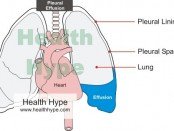Fluid Retention in the Body – Meaning and Causes
It is well known that around 60% of human body is composed of water. The balance of water entering the body and being lost has to be carefully maintained as either extreme, both too much and too little water, can be dangerous. Excess water within the body is expelled mainly through the urine but also through the stool, >> Read More ...





